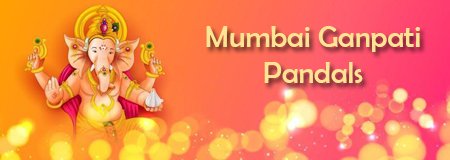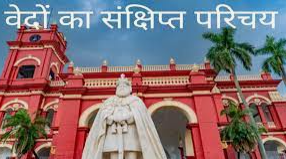Brief Introduction And History Of Vedas
1. Meaning of the word Veda- Veda is made from the word ‘Vid’ which means knowledge or knowing. Vedas are almost the oldest documents of human civilization. Veda is also called ‘Shruti’. The word ‘Shruti’ is derived from the root ‘Shru’. ‘Sru’ means listening because God (Brahm) revealed its mantras in the minds of four sages at the beginning of creation – Agni, Vayu, Angira and Aditya. Vedas are a unique work of the oral tradition of the Vedic period, which has been going on from generation to generation for millions of years, since the beginning of creation. The mantra part itself is the code and is the Veda. When Vedic sages recite Veda mantras with voice, the mind becomes happy.
2. Lectures on Vedas – Brahmin, Aranyaka, Upanishads (a) Brahmin: Yagyas are mainly discussed in Brahmin texts. There is an explanation of the mantras of the Vedas. The rules and science of yagyas are described in detail. There are three main Brahmins: Aitareya, Taittiriya and Shatapatha. This is the real Purana. The modern eighteen Puranas are full of imaginary stories contrary to the Vedas. (b) Aranyaka: Forest is called ‘Aranya’ in Sanskrit. The texts that originated in the forest were named ‘Aranyaka’. The main Aranyakas are five: Aitareya, Shankhayana, Brihadaranyaka, Taittiriya and Tavalkar. (c) Upanishad: Upanishad has been called the simple part of the Vedas and because it is the essence of the Vedas, it is called Vedanta.These contain deep philosophical and scientific descriptions regarding God, creation and soul. The number of Upanishads is considered to be 1180, but at present only 108 Upanishads are available. The main Upanishads are – Ish, Ken, Kath, Prashna, Mundak, Mandukya, Taittiriya, Aitareya, Chandogya, Brihadaranyaka and Shwetashvara. Innumerable Vedas, Brahmin texts, Aranyakas and Upanishads have become extinct.
3. Period of writing of Vedas: Vedas are eternal, they are published by God in the souls of four sages at the beginning of every creation. There are differences of opinion as to when it came into written form. Professor Winternitz believes that the period of composition of Vedic literature was 2000-2500 BC. Some scholars start the period of composition of Vedas from 4500 BC. It is believed that it was composed gradually and the first Vedas were compiled in three parts – Rigveda, Yajurveda and Samaveda, which was called Vedatrayee. According to belief, the division of the Vedas took place during the time of sage Pururava before the birth of Ram. Later Atharvaveda was compiled by sage Atharva. On the other hand, some people believe that after the end of Dwaparayuga during the time of Krishna, Maharishi Ved Vyas organized the Vedas by editing them into four divisions. The teachings of these four divisions were passed on to four disciples, Gave it to Vaishampayan, Jaimini and Sumantu. In that order, Rigveda was assigned to Pail, Yajurveda to Vaishampayana, Samaveda to Jaimini and Atharvaveda to Sumantu. According to this, the Vedas in written form are 6508 years old. This fact also cannot be denied that the facts of Krishna’s existence 5115 years ago have been discovered. Some scholars believe that the Vedas came in book form during the time of King Ikshvaku.
4. Divisions of Veda – Rigveda, Yajurveda, Samaveda and Atharvaveda. Rik is also called Dharma, Yajuh is called Moksha, Sama is called Kama, Atharva is also called Artha. On the basis of these, Dharmashastra, Arthashastra, Kamshastra and Mokshashastra were composed. In all these, the soul, God and nature have been described and praised in detail.
(a) Rigveda: Rik means condition and knowledge. It has 10 mandalas and 1,0522 verses. It has 5 branches – Shakalpa, Vaskal, Ashvalayana, Shankhayana, Mandukayana.
(b) Yajurveda: Meaning of Yajurveda: Yat + Ju = Yaju. Yat means moving and Ju means sky. Apart from this, karma. Inspiration for the best work. Yajurveda has 1975 mantras and 40 chapters. This Veda contains most of the mantras of Yagya. Apart from Yagya, there is description of Tatvgyan. Yajurveda has two branches Krishna and Shukla. Shukla branch is more authentic.
(c) Samaveda: Sama means transformation and music. Gentleness and worship. It contains 1875 mantras. Most of the verses are from Rigveda.
(d) Atharva Veda: Tharva means vibration and Atharva means non-vibration. Only the one who remains absorbed in the worship of God while doing the best deeds through knowledge attains salvation by attaining an unshakeable intellect. There are 5977 mantras and 20 kandas in Atharvaveda. There are many verses from Rigveda in this also.
5. Six parts of the Vedas – education, rhyme, grammar, nirukta, astrology and kalpa.
6. Six appendages of Vedas: Pratipadasutra, Anupada, prosody (Pratishakhya), Dharmashastra, Nyaya and Vaisheshika. These six appendices are available. This is called Shadarshan, which is as follows:- Sankhya, Yoga, Nyaya, Vaisheshika, Mimamsa and Vedanta.
7. Four Upvedas of Vedas: Ayurveda of Rigveda, Dhanurveda of Yajurveda, Gandharvaveda of Samveda and Arthveda of Atharvaveda. These have been described as Upvedas of the four Vedas respectively.
8. Modern division of Vedas: According to modern ideology, the four Vedas were divided in this way – Yagnik, Prayogya and Literary.
9. According to some scholars, the essence of the Vedas is the Upanishads and the essence of the Upanishads is the philosophical texts. In this order, Vedas, Upanishads and Darshan are the only religious scriptures, there is no one else. Veda sentences have been explained in detail in the Smritis. Valmiki considers Ramayana and Mahabharata as history and Puranas as ancient history texts. Scholars have justified self-study of Vedas, Upanishads and philosophies.
10.Rishis and sages have been called seers and Vedas have been called Gods. Vedas are not the product of the minds or thoughts of the sages. The sages wrote or said what they saw, heard and experienced while fully awake or in samadhi.
11.It is said in Manusmriti that Vedas are the supreme and first authority. Vedas do not recognize any kind of distinction between high and low, caste, gender, male and female etc. Names of about 414 sages are found in the hymns of Rigveda, out of which about thirty names are of female sages. Opposition to caste on the basis of birth is found in Purusha-Sukta 10.90.12 of Rigveda and verses 4.13,18.41 of Srimad Bhagwat Geeta.
12. Shrutismriti Puranaan Virotho Yatra Drishyate..Tatra Shrautam Pramantu Tayodvaidhe Smritirtvara. That is, wherever there is a conflict between the Vedas and other scriptures, the words of the Vedas will be valid there.
13. Rigveda Dibhasya Bhumika, Satyarthprakash and his Poona discourses written by Maharishi Dayanand are very helpful in understanding the history and teachings of the Vedas. Satyarth Prakash has also been considered to be the essence of Vedas, Upanishads and philosophies, in which all the scriptures have been reviewed beautifully in question and answer style.
14. Twenty-eight thousand manuscripts of Vedas are kept in ‘Bhandarkar Oriental Research Institute’ of Pune in India. Of these, thirty manuscripts of Rig Veda are very important which have been included in the UNESCO heritage list. UNESCO has published the Rigveda from 1800 to 1500 BC. Thirty manuscripts have been included in the list of cultural heritage. It is noteworthy that India’s list of important manuscripts is 38 in UNESCO’s list of 158.










